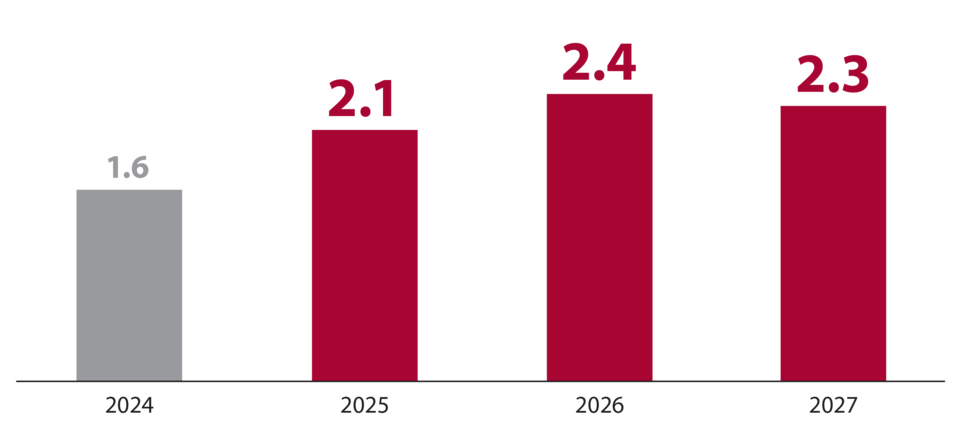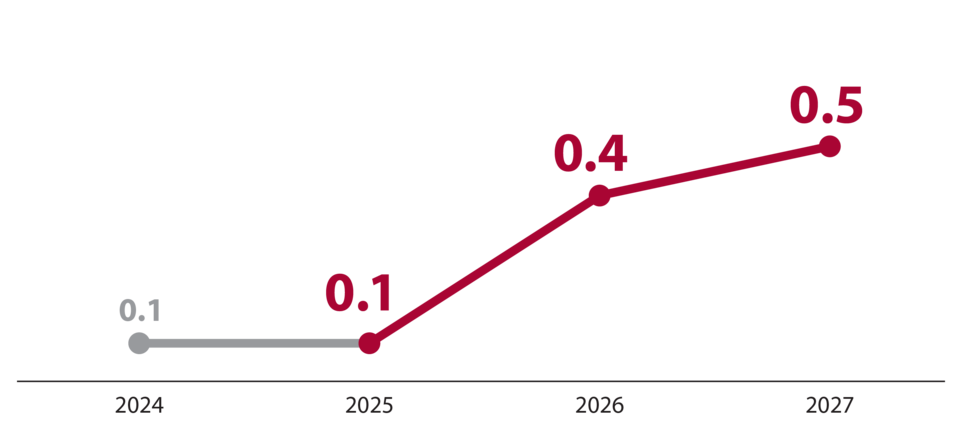Slovenian Economic Mirror 4/2025: Lower activity in the export sector and stronger household consumption at the beginning of the second quarter; noticeable slowdown in year-on-year consumer price growth in May
Available economic indicators for Slovenia at the beginning of the second quarter point to reduced activity in the export sector and stronger household consumption. Goods exports and imports declined both month-on-month and year-on-year in April;…
Charts of the week from 9 to 13 June: production volume in manufacturing, activity in construction and current account of the balance of payments
The contraction in manufacturing activity, ongoing since the beginning of the year, persisted in April, with growth recorded only in medium-high-technology industries. On average, in the first four months of the year, output declined in most sectors compared to the same period…
Charts of the weekt from 2 to 6 June 2025: exports and imports of goods, unemployment
Goods exports and imports declined month-on-month in April: exports due to lower exports of most major product groups, particularly metals and metal products, and imports due to a decrease in imports of intermediate goods. Exports and imports were also lower year-on-year in April; however, on average over the first four months of the year, both remained higher year-on-year. The number of…
Government reappoints Maja Bednaš as Acting Director of the Institute of Macroeconomic Analysis and Development
At today's session, the Government of the Republic of Slovenia reappointed Maja Bednaš as Acting Director of the Institute of Macroeconomic Analysis and Development as of 6 June 2025. Her mandate is limited to the appointment of a new director and may not exceed three months, i.e. until 5 September…
National productivity board
IMAD analyses productivity and competitiveness as the national productivity board
GDP and prices
Economic growth is expected to accelerate to 2.1% this year, which is slightly lower than expected in the autumn forecast. Domestic consumption will be a key driver of GDP growth this year, in particular continued growth in private consumption supported by rising wages and social transfers, as well as a recovery in investment after last year’s decline. Economic growth is expected to accelerate slightly over the next two years. Average inflation will be 2.3% this year. While price increases will remain moderate in most groups, services will continue to outpace overall inflation. In the absence of shocks, inflation is expected to fall slightly after 2025 and hover around 2%.
Labour market
In addition to economic conditions, demographic changes also play a significant role in shaping the labour market. Given the high level of employment and labour shortages, employment is expected to increase by 0.1% this year and by 0.4% and 0.5% respectively over the next two years, amid moderate economic growth. Unemployment will continue to decline slightly, with the number of registered unemployed falling not only due to the transition into employment, but also due to the increasing transition from unemployment to inactivity or retirement.
International trade
With the gradual recovery in foreign demand, exports of goods and services are expected to continue growing this year and in the coming years, albeit at a slower pace than before the pandemic and the energy crisis. After last year’s strong growth, which moderated markedly in the last quarter, growth in goods exports is expected to align more closely with foreign demand growth, while growth in services exports will accelerate further. The current account surplus remained high last year and will narrow gradually in 2025–2027.
IMAD

The Institute of Macroeconomic Analysis and Development of the Republic of Slovenia is an independent government office.
The Institute performs the following tasks:
- it monitors and analyses current trends and development in its economic, social and environmental dimensions;
- it monitors and analyses the achieving of the development objectives of the country;
- it prepares macroeconomic forecasts and other expert groundwork that serve as the basis for budgetary planning and formulating economic policy measures;
- it analyses productivity and competitiveness as the national productivity board;
- it carries out research work.



